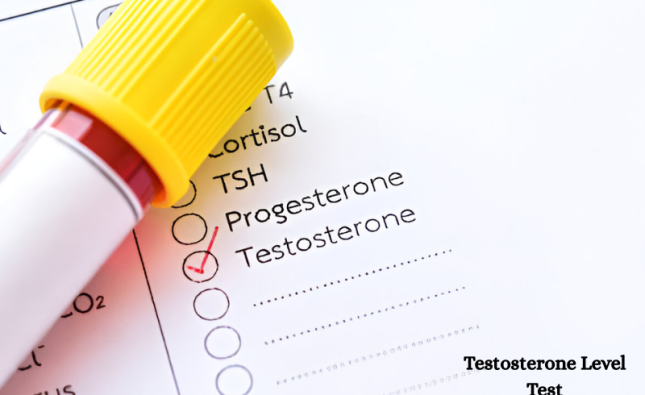
About the Author:
Sarah Jones is a certified pain management specialist with over 10 years of experience helping individuals navigate chronic pain. She is passionate about empowering patients to take control of their health and live fulfilling lives despite pain.
Chronic Pain Management Strategies: A Quick Guide
| Strategy | Description | Benefits |
| Regular Exercise | Low-impact activities like walking, swimming, or yoga can improve flexibility, reduce inflammation, and boost mood. | Increased pain tolerance, improved sleep, and enhanced overall well-being. |
| Relaxation Techniques | Deep breathing, meditation, and progressive muscle relaxation can ease muscle tension and promote calmness. | Reduced stress levels, improved sleep quality, and better pain management. |
| Prioritizing Sleep | Adequate sleep is crucial for pain recovery. Establish a regular sleep schedule and practice good sleep hygiene. | Improved energy levels, better mood, and enhanced pain tolerance. |
| Healthy Diet | Focus on whole foods, fruits, vegetables, and lean protein sources. Limit processed foods, sugar, and unhealthy fats. | Reduced inflammation, improved energy levels, and better overall health. |
| Cognitive Behavioral Therapy (CBT) | CBT can help individuals develop coping mechanisms for pain and manage negative thoughts associated with chronic pain. | Improved pain management skills, reduced anxiety and depression, and increased quality of life. |
| Acupuncture or Massage Therapy | These complementary therapies can provide targeted pain relief and promote relaxation. | Reduced pain intensity, improved muscle tension, and enhanced well-being. |
Understanding Chronic Pain: A Friend or Foe?
Chronic pain is a complex condition that can significantly impact your daily life. It’s important to remember that pain is a signal, not an enemy. While acute pain serves as a warning of injury, chronic pain can become a condition on its own, often without a clear underlying cause. The constant barrage of pain signals can disrupt your nervous system, leading to fatigue, difficulty sleeping, and emotional distress.

The Power of Movement: Get Your Body Moving
Exercise is often the last thing someone with chronic pain wants to do, but it’s one of the most effective tools for managing pain in the long run. Regular physical activity strengthens muscles and improves flexibility, which can help stabilize joints and reduce pain. Exercise also boosts endorphin production, the body’s natural painkillers, leading to a more positive outlook and improved mood.
Here’s how to get started:
- Choose low-impact activities: Walking, swimming, yoga, and tai chi are all excellent options for those with chronic pain.
- Start slow and gradually increase intensity: Begin with short sessions and gradually increase the duration and intensity of your workouts as your fitness improves.
- Listen to your body: Pain is a signal, but it doesn’t have to stop you from exercising. Pay attention to your body’s cues and adjust the intensity or duration of your workout accordingly.
Relaxation Techniques: Taming the Tension
Chronic pain and stress often go hand-in-hand. Stress can exacerbate pain perception, creating a vicious cycle. Relaxation techniques like deep breathing, meditation, and progressive muscle relaxation can help break this cycle. By calming the nervous system, relaxation techniques can significantly reduce pain perception and promote feelings of peace and well-being.
Here are some relaxation techniques to explore:
- Deep breathing: Focus on slow, deep breaths from your diaphragm. Breathe in through your nose for a count of four, hold for a count of seven, and exhale slowly through your mouth for a count of eight. Repeat this cycle for several minutes.
- Meditation: Find a quiet space, close your eyes, and focus on your breath. Allow thoughts to come and go without judgment. If your mind wanders, gently bring your focus back to your breath.
- Progressive muscle relaxation: Tense and relax different muscle groups throughout your body, starting with your toes and working your way up to your head. Focus on the feeling of tension releasing as you relax each muscle group.
Sleep Strategies for Chronic Pain Sufferers
Getting enough quality sleep is vital for both physical and mental health. When you’re in chronic pain, sleep can be elusive. Getting enough quality sleep is vital for both physical and mental health. When you’re in chronic pain, sleep can be elusive. The constant discomfort can make it difficult to fall asleep and stay asleep throughout the night. However, prioritizing sleep is crucial for managing chronic pain. Here are some tips to improve your sleep hygiene and get the rest you need:
- Establish a regular sleep schedule:Go to bed and wake up at the same time each day, even on weekends. This helps regulate your body’s natural sleep-wake cycle.
- Create a relaxing bedtime routine: Take a warm bath, read a book, or listen to calming music before bed. Avoid screens like TVs, laptops, and phones for at least an hour before sleep as the blue light they emit can disrupt sleep patterns.
- Optimize your sleep environment: Make sure your bedroom is dark, quiet, and cool. Invest in blackout curtains, earplugs, and a comfortable mattress and pillows.
- Limit caffeine and alcohol intake: Avoid caffeine in the afternoon and evening, as it can interfere with sleep. While alcohol may make you drowsy initially, it can disrupt sleep later in the night.
- See a doctor if you have sleep apnea: Sleep apnea is a sleep disorder that can worsen chronic pain. If you experience frequent snoring or daytime sleepiness, talk to your doctor about getting tested for sleep apnea.

Building a Balanced Diet for Pain Management
What you eat can significantly impact your pain levels. Chronic inflammation is often a contributing factor to chronic pain. A healthy diet rich in anti-inflammatory foods can help reduce inflammation and improve overall well-being. Here are some dietary tips for pain management:
- Focus on whole foods: Fill your plate with fruits, vegetables, whole grains, and lean protein sources. These foods are packed with nutrients that can help your body heal and fight inflammation.
- Limit processed foods: Processed foods are often high in unhealthy fats, added sugars, and sodium, which can contribute to inflammation.
- Choose healthy fats: Include healthy fats like those found in olive oil, avocados, and fatty fish in your diet. These fats can help reduce inflammation and improve heart health.
- Stay hydrated: Drinking plenty of water helps flush toxins from your body and keeps your joints lubricated. Aim for eight glasses of water per day.
The Mind-Body Connection: Exploring Alternative Therapies
Chronic pain doesn’t just affect the physical body; it can also have a significant impact on your mental and emotional well-being. The mind and body are interconnected, and stress and negative emotions can exacerbate pain perception. Exploring alternative therapies that address the mind-body connection can be a valuable tool in your pain management toolbox. Here are a few options to consider:
- Cognitive Behavioral Therapy (CBT): CBT can help individuals develop coping mechanisms for pain and manage negative thoughts associated with chronic pain. By learning to reframe negative thoughts and develop healthy coping skills, CBT can significantly improve pain management and quality of life.
- Acupuncture: Acupuncture involves inserting thin needles into specific points on the body. Studies suggest that acupuncture can be effective in reducing pain for various conditions.
- Massage Therapy: Massage therapy can help relieve muscle tension, improve circulation, and promote relaxation. There are different massage techniques, so discuss your needs with a qualified massage therapist to find the best approach for you.
When to Seek Professional Help: It’s Okay to Ask for Support
While the strategies outlined above can be helpful for managing chronic pain, it’s important to remember that you’re not alone in this journey. If your pain is severe or interferes with your daily activities, don’t hesitate to seek professional help. A doctor or pain specialist can help you develop a personalized treatment plan that addresses your specific needs. They can also prescribe medication to manage pain and recommend physical therapy or other interventions.
Here are some signs that it’s time to see a doctor for your chronic pain:
- The pain is severe and interferes with your daily life.
- You’ve tried self-care strategies without success.
- The pain is accompanied by other symptoms like fever, weight loss, or numbness.
Living Well with Chronic Pain: It’s a Journey, Not a Destination
Chronic pain can be a challenging condition, but it doesn’t have to control your life. By implementing the strategies discussed in this article and working with your healthcare team, you can effectively manage your chronic pain and live a fulfilling life. Remember, chronic pain management is a journey, not a destination. There will be good days and bad days, but by staying committed to your pain management plan and maintaining a positive attitude, you can take control of your health and well-being.










